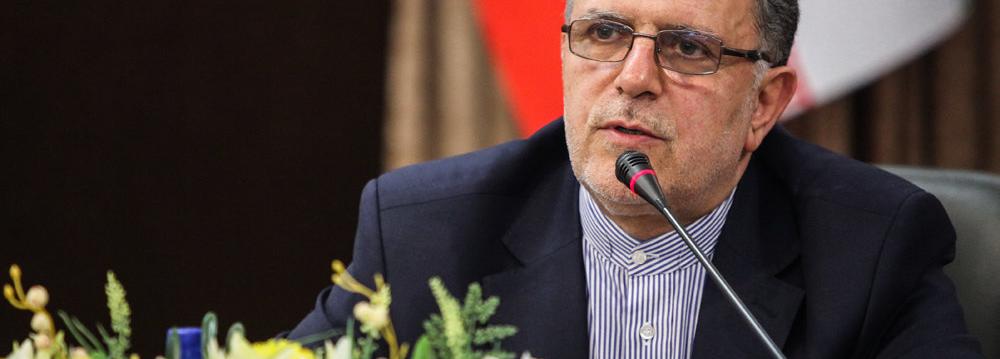The governor of the Central Bank of Iran says an increase in the central bank’s assets is the main reason behind the surge in liquidity during the last fiscal year (ended March 19).
In a meeting with the CEOs and board members of banks in the western province of Kermanshah, Valiollah Seif said a hike hike in CBI assets had caused the 30% increase in the money stock.
“However the monetary base did not increase last year and what’s more, the debt of banks to the CBI declined”, reports banker.ir.
According to data released by the CBI, the money stock increased by 30% in the month ending March 19 at an annual rate to over 10 quadrillion rials ($327.3 billion); a formidable increase that is incomprehensible given that inflation is at or below 10%.
Saying that the country had entered a single-digit inflation rate, Seif said that goal was achieved despite the fact that the nation was struggling with punitive international sanctions for several years.
“After eight quarters of continued slowdown, the positive economic growth in the past two years is worthy of attention and we hope to achieve a 4-5% growth this fiscal year”, he added.
Last month Iran’s inflation rate eased to single digits for the first time in a quarter century following the lifting of sanctions against Tehran after the implementation of a landmark nuclear agreement (the Joint Comprehensive Plan of Action) in January.
Regarding the rise in employment both at the national level and in the northwestern Kermanshah Province, the CBI chief said in 2016-17, in addition to following up on the achievements of the past two years, the CBI is keen on helping small and medium-sized industrial units. An effort that he said would add to payrolls in addition to preserving the current jobs and help bolster productivity.
“In Kermanshah Province too we must help create jobs and maintain momentum by way of positive economic measures.”
Reform Plan
Referring to the implementation of the banking reform plan by next March when the fiscal Iranian year ends, he said the plan could resolve the credit crunch, help reduce sour assets and revitalize the country’s banking system.”
Just over a week ago, the much-anticipated banking overhaul plan was unveiled and signed into law by President Hassan Rouhani, in what was a significant step in implementing major reforms in the troubled banking sector.
The central bank later spelled out details of the first phase of the plan and said strengthening its supervisory and monetary policymaking role is among its main goals.
Seif considered the close scrutiny of the banking system a positive move saying it had brought to the fore “three decades of piled-up problems which had rendered 40-50% of banks’ assets useless.”
According to Seif, about 12% of the toxic assets are in the form of bad loans and to fix the problem he talked of new plans devised jointly by the CBI, the government and the judiciary. “When we reach the set goals, the assets will be unlocked and spent to support positive economic endeavors,” he said without elaboration.
He said 164 small and medium-sized industrial units have been introduced to banks in Kermanshah to receive credit if they are deemed creditworthy. “Should they fail to qualify for lending they will be referred to the CBI for further assessment.”
In conclusion, Seif called corporate culture “the biggest capital of the banks”, expressing the hope that the banking system would be able to do its fair share in promoting economic growth.


